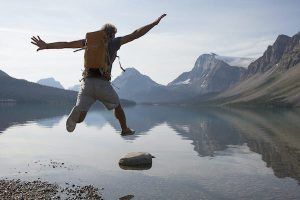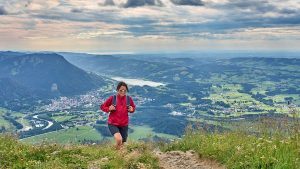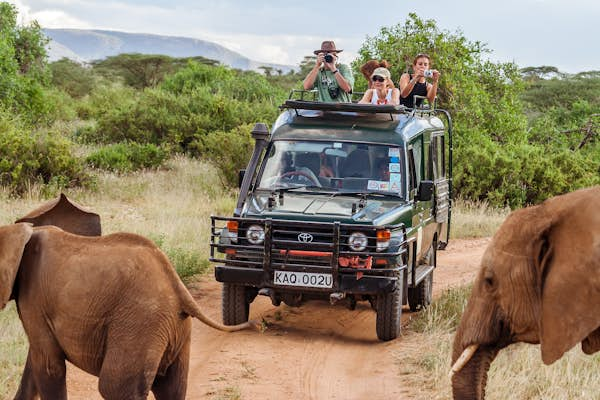
From remote national parks and spectacular hikes to balmy coastal towns and the lively buzz of Nairobi, you’ll want to experience all you can on a trip to Kenya. Whether you take a taxi or hop into a matatu (minivan), this beautiful country is a relatively easy place to get around once you know your options.
For some journeys, it’s possible to travel slower and more sustainably. Sailing on a traditional dhow along the Kenyan coast or taking the train from Nairobi to Mombasa are great examples, and you’ll see so much more of the landscape on the way.
Here are our top tips for getting around Kenya, from the beaches to the Masai Mara.
Forge new connections on your next adventure with the latest advice from our weekly newsletter.
Buses connect practically every town in Kenya
There’s an extensive bus network connecting larger and smaller towns, especially in western Kenya, with frequent links to the capital and coast. You’ll find services are less frequent as you head into northern Kenya. Several private companies operate bus services around the country and, for the most part, these long-haul buses are comfortable, affordable, relatively fast and safe. The newer long-haul buses often have recliner seats, and some have wi-fi.
It’s best to take bus journeys in daylight hours because of concerns over crime, so aim for morning departures for long trips. Companies such as Modern, Dreamline, Coast Bus and The Guardian Coach are reliable, but the list of bus companies is exhaustive, so ask around when making a particular journey – the company you choose will often depend on the route you’re after.
Travel slowly and take the train for long trips in Kenya
If you’ve got the time and you’re heading to Mombasa from Nairobi or vice versa, take the train. The Madaraka Express passenger train currently operates three times a day, including a non-stop night train, with journey times of between five and six hours. The current service started in 2017 and it follows the same route as the old Mombasa train.
In the days of British colonial rule, this was a sleeper train that took 15 hours. It became widely known as the “Lunatic Express” because of the harsh conditions workers were forced to endure while building it, such as attacks by dangerous animals and the spread of tropical diseases.
The track passes through some of the most beautiful parts of the country as you move from the city through the Tsavo East and Tsavo West national parks, and get a glimpse of Kilimanjaro as you head towards the coast (or back to the capital).
You can also travel to Nanyuki from Nairobi by train. The trip takes seven hours, traveling via Thika, but it’s a scenic way to travel to the gateway town for trips to Mt Kenya National Park. A weekly Kisumu Safari Train goes from Nairobi to the town of Kisumu on the shores of Lake Victoria every Friday at 6:30pm and returns to Nairobi on Sunday at 6:30pm.
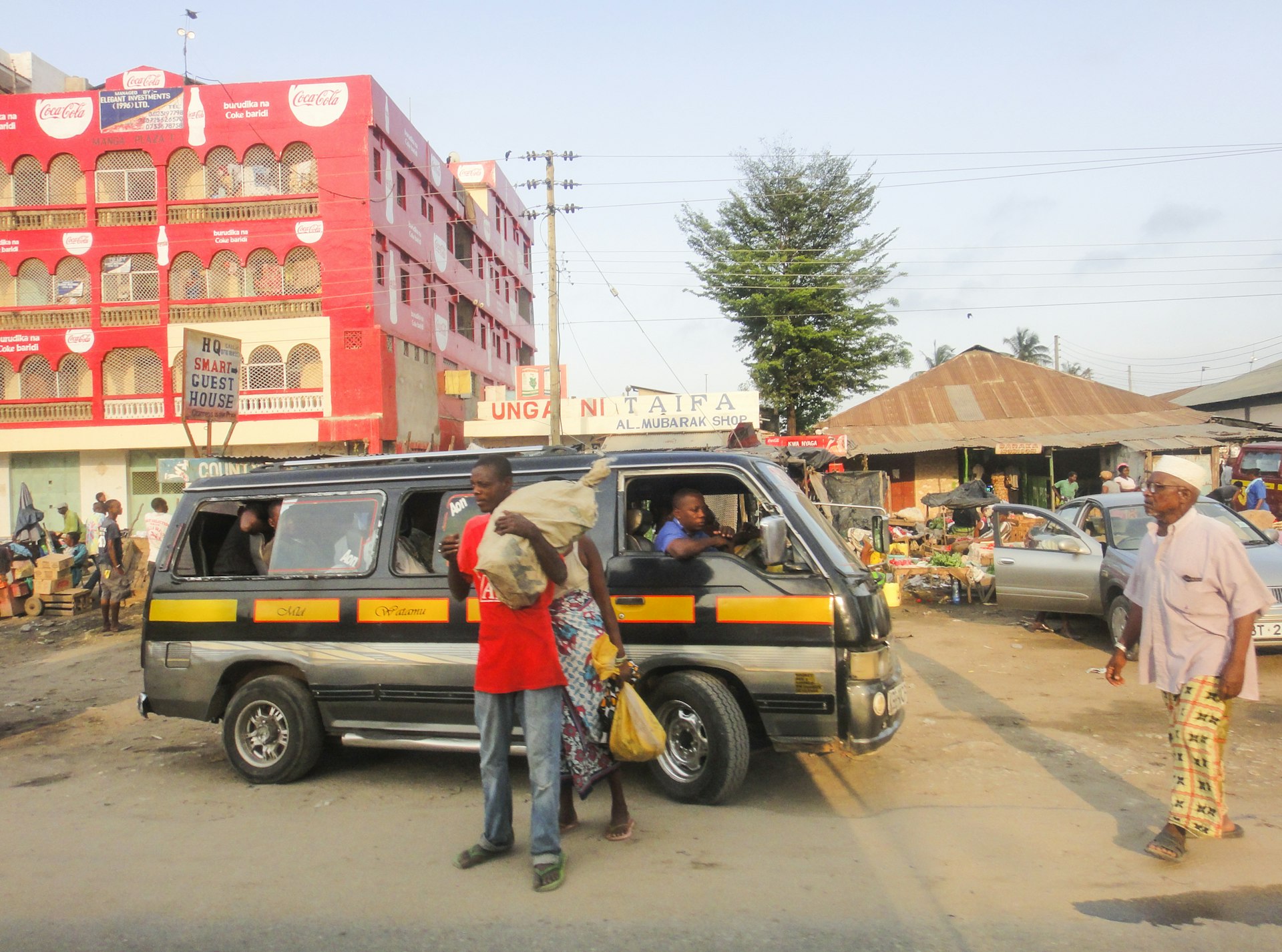 Matatus are cheap and frequent in Kenya, but not always comfortable © Authentic travel / Shutterstock
Matatus are cheap and frequent in Kenya, but not always comfortable © Authentic travel / Shutterstock
Hop into a matatu (shared minibus)
It won’t be everyone’s first choice of transport, but matatus (shared minibuses) are the most used form of public transport in Kenya for locals, especially in Nairobi, although they are slowly being phased out in favor of more regulated, larger-capacity buses.
These privately-owned vehicles leave when full – which often means full to the point of discomfort – but if you get lucky with a less-packed vehicle, it’s a fun way to travel short distances, such as within the downtown area and suburbs of Nairobi. Fares are fixed and affordable, and you pay the driver or conductor on board.
Matatus are often colorfully painted, sometimes with slogans or portraits of famous people, and many have music blaring out. Some even have free wi-fi and movies or pop videos playing. Safety issues can be a concern: there are rules about seat belts for example, but they’re not always followed, and the quality of driving is variable.
For safety reasons, it’s best to take a matatu with other travelers you know and to only use them in the daytime for urban travel. Always lock your luggage and keep valuables with you. Avoid the front seat next to the driver because of the risk of collisions.
For faster urban hops, take a shared taxi, aka Peugeot
An alternative to matatus is the shared taxi or “Peugeot.” These station wagons take around seven to nine passengers and, like matatus, they leave when they’re full. The upside is they’re rarely over-crowded, and they don’t stop between the start and end points. You’ll generally find shared taxis running on fixed routes in north and west Kenya.
 When taking a taxi in Kenya, factor the traffic into your travel time © Syrus Neilson / Shutterstock
When taking a taxi in Kenya, factor the traffic into your travel time © Syrus Neilson / Shutterstock
Use ride-hailing apps to get from A to B
Uber, Bolt and the local option Hava have had huge success in Kenya, especially in urban centers such as Nairobi. Make sure you download and set up an account on the app if you don’t already use it and, if possible, add a payment card that doesn’t charge extra for overseas transactions (fares will be calculated in Kenyan shillings).
With so many drivers available, the apps make finding a lift incredibly easy, plus you can share your journey information with friends or family as an added safety consideration. Uber has also launched UberASSIST for passengers with disabilities, highlighting drivers who can offer extra help and whose cars are equipped for wheelchairs.
Take a traditional taxi
Taxis are in plentiful supply in major towns and cities. You can usually find them at taxi ranks around tourist attractions, bus stations and other key areas. They’re not always metered though, so ensure you agree on the fare in advance. Where possible, get an idea of what a journey from X to Y should approximately cost – ask at your accommodation or quiz your guide.
Taxis are great for longer-distance journeys as an alternative to flights; if you’re in Mombasa and want to get up to Kilifi, Malindi or down to Diani Beach, it’s the easiest option. When split between a few people, they can be incredibly good value, with the bonus that you can pick your departure time and stop when you need to. At night, it’s advisable to take a taxi back to your hotel in cities rather than walk.
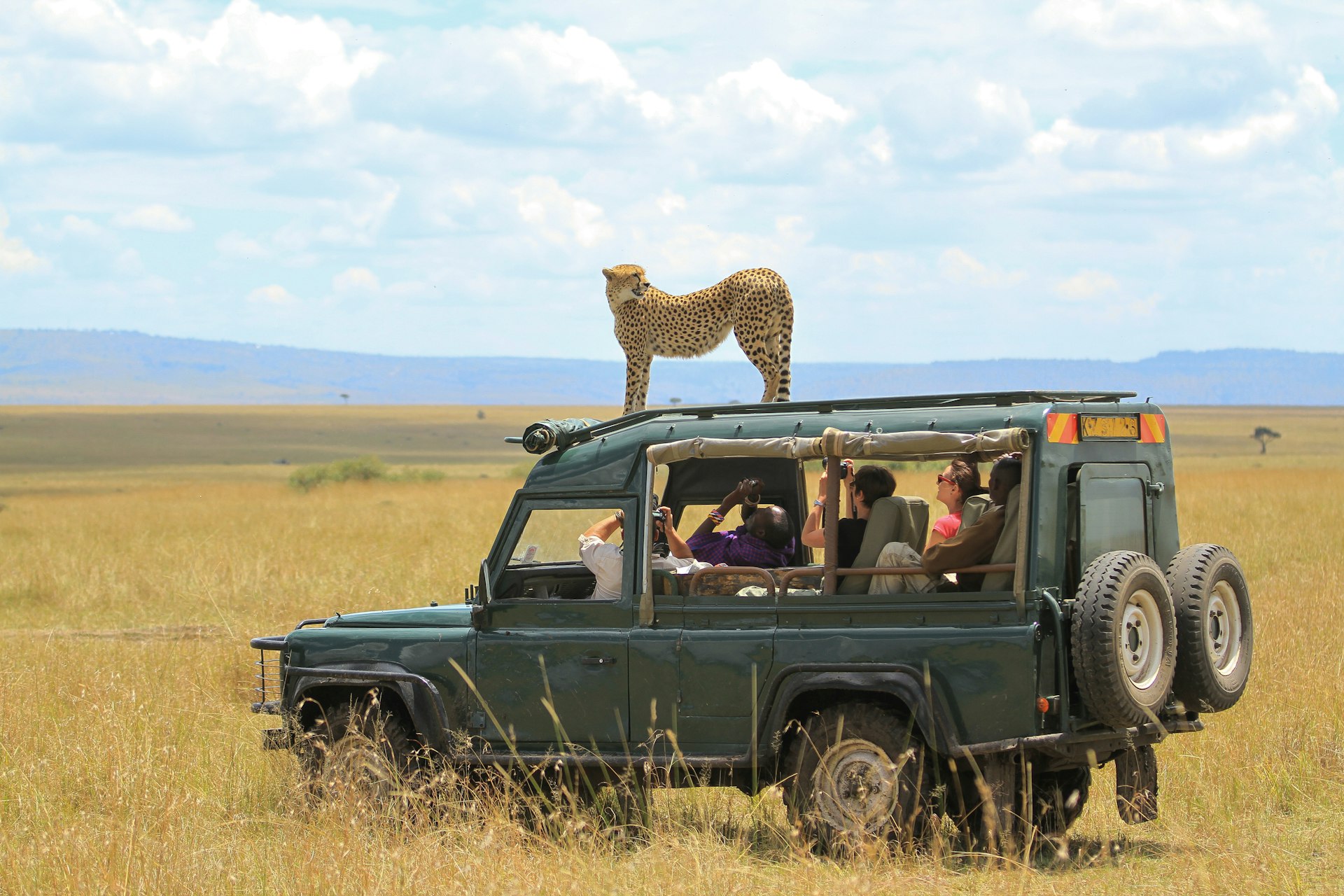 You’ll want to hire a 4WD to explore national parks areas such as the Masai Mara © Pedro Helder Pinheiro / Shutterstock
You’ll want to hire a 4WD to explore national parks areas such as the Masai Mara © Pedro Helder Pinheiro / Shutterstock
Road trip with your own wheels to reach remote areas and national parks
Driving in Kenya is a great choice if you want the ultimate freedom to explore, stop off and be spontaneous. But if you want to take on Kenya’s roads yourself, being prepared is key. You must have an international driving license as well as your national one, and you usually need to be at least 23 years old, though some car hire companies have a minimum age of 25. It helps to know the vehicle (4WDs are best for national park trips where roads are often unpaved and challenging in wet weather) and know how to change a tire, because breakdown assistance can be slow if you’re not on a main stretch of road.
All main roads out of Nairobi are paved, and surfaced single-lane highways are common. Being a confident driver will help because the rules of the road tend to be “each to their own.” For safety, only drive during the day in areas you’re not familiar with, or that are known to be unsafe because of carjacking and other crimes, though perceptions of the risk are often higher than the reality of the situation on the ground. It’s also best to avoid nighttime driving because of poor lighting and road conditions, such as potholes and unpaved roads in some areas.
Check up-to-date guidance from your government or with local guides or contacts at your accommodation on areas to avoid. Be very careful when parking overnight – never leave anything valuable in your vehicle and seek out secure, guarded parking.
Safari operators can arrange transfers to your next destination
If you’re booking an organized safari, it’s worth knowing that some companies can take care of transport between your start and end point, depending on the route and distances. For example, if you’re starting your trip in Nairobi, operators can pick you up for a transfer to Tsavo National Park, then take you on to Mombasa for the beach component of your vacation at the end of your safari. It’s time-saving and can also save on the cost of organizing separate taxis, flights or vehicle transfers.
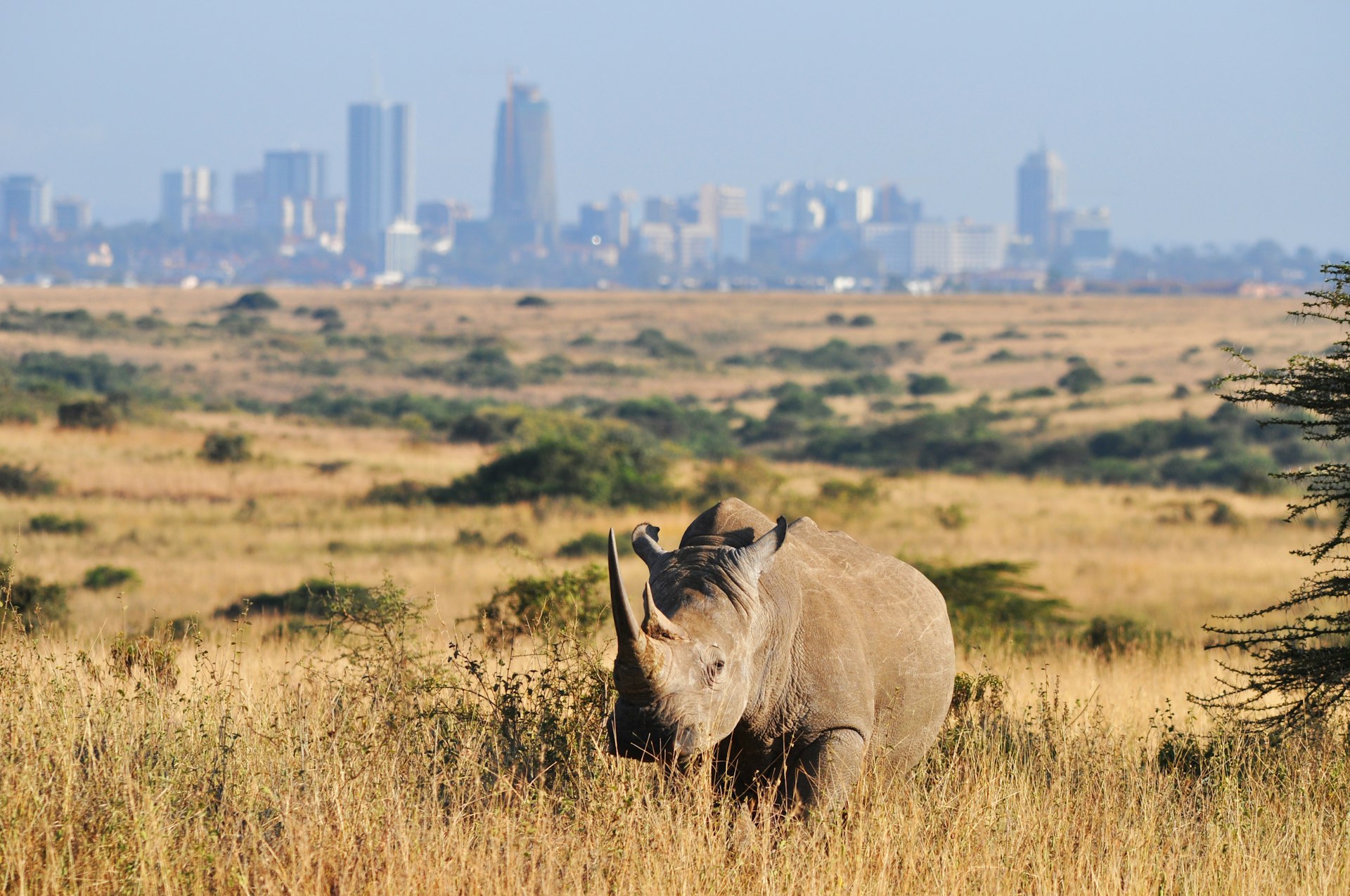 You don’t have to travel far from Nairobi to see wildlife – Nairobi National Park starts right on the city limits © Verónica Paradinas Duro / Getty Images
You don’t have to travel far from Nairobi to see wildlife – Nairobi National Park starts right on the city limits © Verónica Paradinas Duro / Getty Images
Have a boda-boda experience to zip through Kenyan traffic
You’ll find motorcycle taxis called boda-bodas in most towns and cities in Kenya, especially where there aren’t as many standard taxis. Boda-bodas are cheap, great at weaving in and out of traffic, and plentiful, but poor safety is a downside. Helmets are not always offered and regulation is sporadically enforced.
Boda-bodas are best for those who are already comfortable on motorbikes; ride during the day for personal safety reasons and because of the local road conditions. The majority of boda-boda drivers are responsible, but the nature of this form of transport means you should stay alert if you’re not a regular rider.
Jump into a tuk-tuk
Tuk-tuks (autorickshaws) aren’t widespread in Kenya, but you’ll find them in abundance in Malindi, north of Mombasa on Kenya’s Indian Ocean coast. These covered, open-sided vehicles are a great way to get around, but you should negotiate the fare with the driver if there isn’t a meter. You may also find tuk-tuks in Nairobi, Mombasa, Diani Beach and Nakuru.
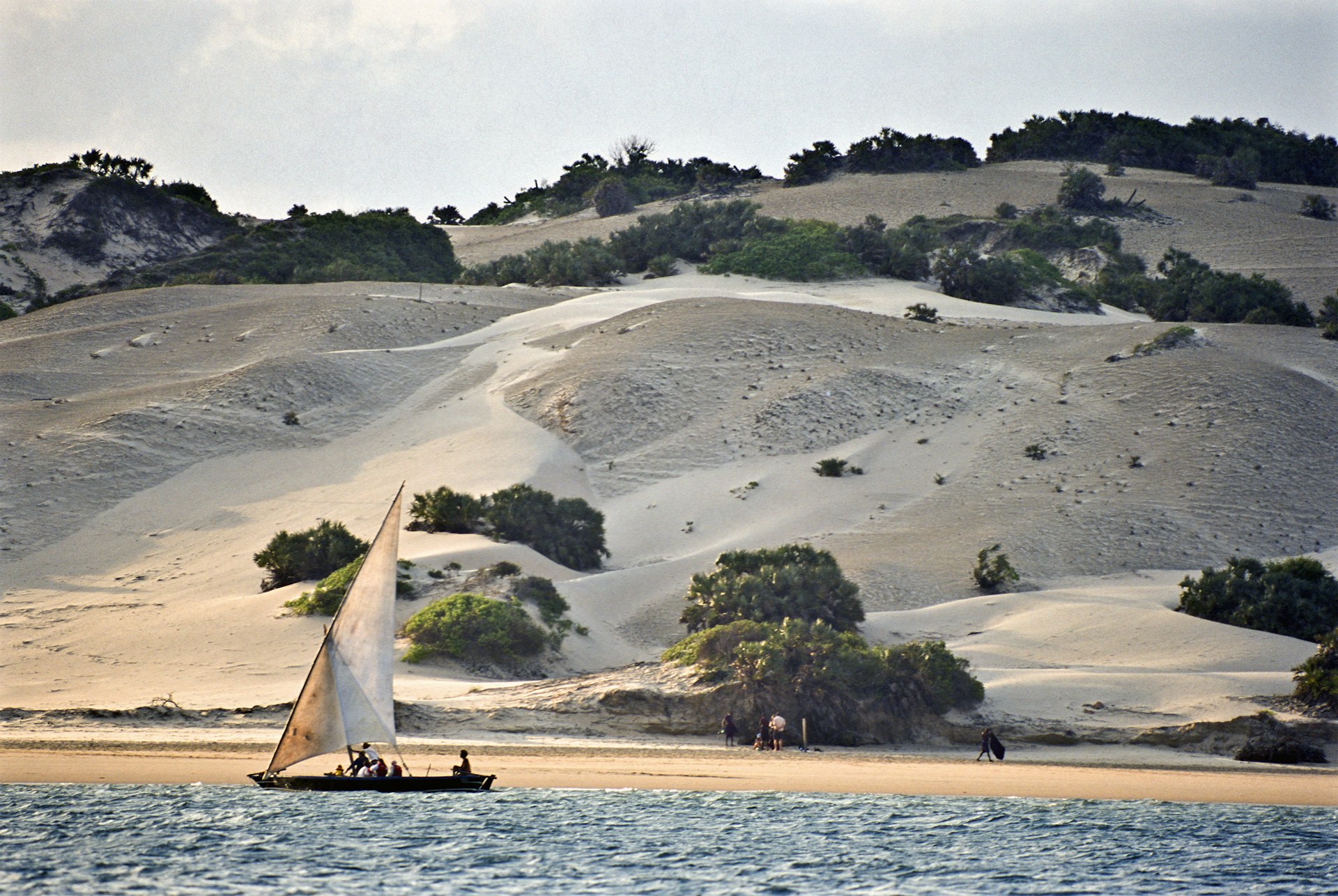 Dhows are a wonderfully evocative way to explore the Kenyan coastline © John Seaton Callahan / Getty Images
Dhows are a wonderfully evocative way to explore the Kenyan coastline © John Seaton Callahan / Getty Images
Sail along the coast by dhow for carbon-free travel
It’s not really a form of public transport – more of an experience – but nothing beats taking a dhow (traditional sailboat) to explore Kenya’s Indian Ocean coastline. This is a slow, quiet and unusual way to appreciate life on the Kenyan coast and the offshore islands.
You can book dhow trips from the beach towns and resorts of Mombasa, Watamu and Diani Beach, and from Lamu and Shela in the Lamu archipelago. For a cruise-like experience, request a catered sailing or bring your own drinks and snacks. Trips can range from a couple of hours at sunset to hiring a dhow for a full day to visit different beaches and bays.
Take the ferry to cross rivers and reach islands
To travel between Mombasa Island and the mainland to the southwest, the ferry is a scenic way to cross the Likoni Channel and enjoy views of the Indian Ocean. It’s a popular choice for people traveling to the beach resorts of Diani and Galu, south of Mombasa, and it’s a lively experience as well, with the opportunity to chat with fellow passengers. Just take care with your belongings on the crowded ferries.
Five ferries are operational: MV Nyayo, MV Harambee, MV Kilindini, MV Likoni and MV Kwale, and plans are afoot to introduce more boats. It’s free for passengers and cyclists, with a small charge for motorists and motorcyclists.
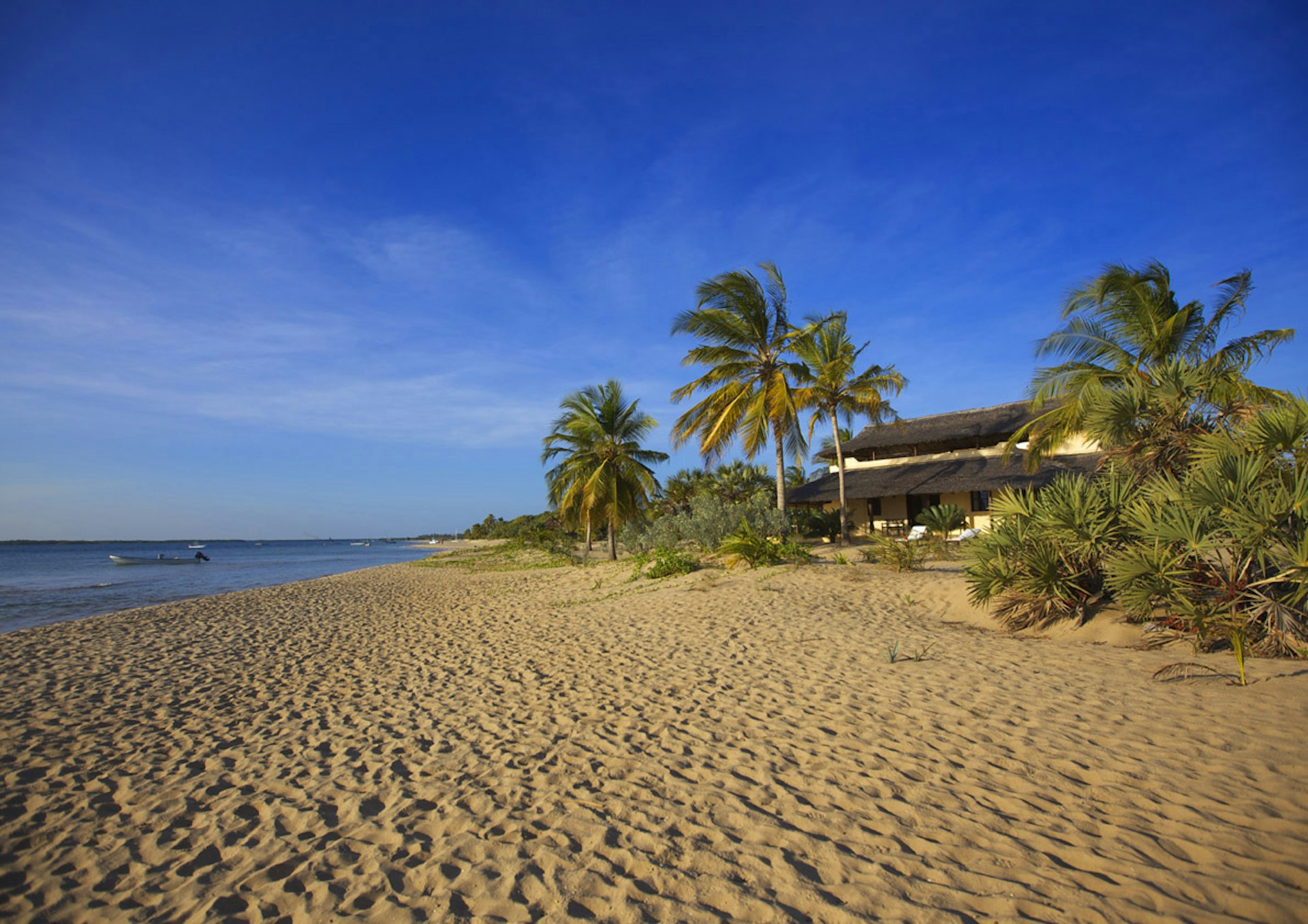 It’s easy to reach Kenya’s Indian Ocean coast from Nairobi by train, bus, plane or taxi © Eric Lafforgue / Lonely Planet
It’s easy to reach Kenya’s Indian Ocean coast from Nairobi by train, bus, plane or taxi © Eric Lafforgue / Lonely Planet
Accessible transportation in Kenya
Getting around by public transport in Kenya hasn’t always been easy for travelers with mobility issues because of a lack of investment, but things are changing, albeit slowly. Some rapid transit bus services have wheelchair spaces and a ramp to assist boarding, plus priority seating for the elderly, pregnant and other travelers who need them.
Uber has rolled out UberASSIST in Nairobi, using drivers who’ve been trained to help people getting into vehicles that have spaces for folding wheelchairs and walkers. Depending on your needs, it’s the willingness of local people to help that can be the savior of a trip to Kenya.
It’s easier for travelers with disabilities to arrange private transport. Always let the guide, travel company and driver know what you need, whether it’s physical assistance, a ramp, extra storage or safety clamps to secure wheelchairs. For more information on accessible travel, see Lonely Planet’s Accessible Travel Resources.
Take the plane if time’s an issue
Flying is never the most sustainable option, but several domestic airlines provide handy connections between Nairobi, Mombasa, other coastal towns such as Malindi and the Lamu Archipelago, and smaller airports close to national parks. Nearly a dozen airlines connect these destinations, including Kenya Airways, and some fly to just three or four popular national parks, such as the Masai Mara, from Nairobi.
The relative affordability of domestic air travel makes it appealing and often unavoidable – current safety guidance to Kenya from the UK government, for example, advises that people travel to the Lamu Archipelago by air rather than going via Lamu County. Taking the bus, train or driving are better alternatives for certain journeys, but some of the more remote lodges are only accessible via a chartered plane, which comes at a price.
This piece was fact-checked and updated by Helena Smith on 23 March 2023.

